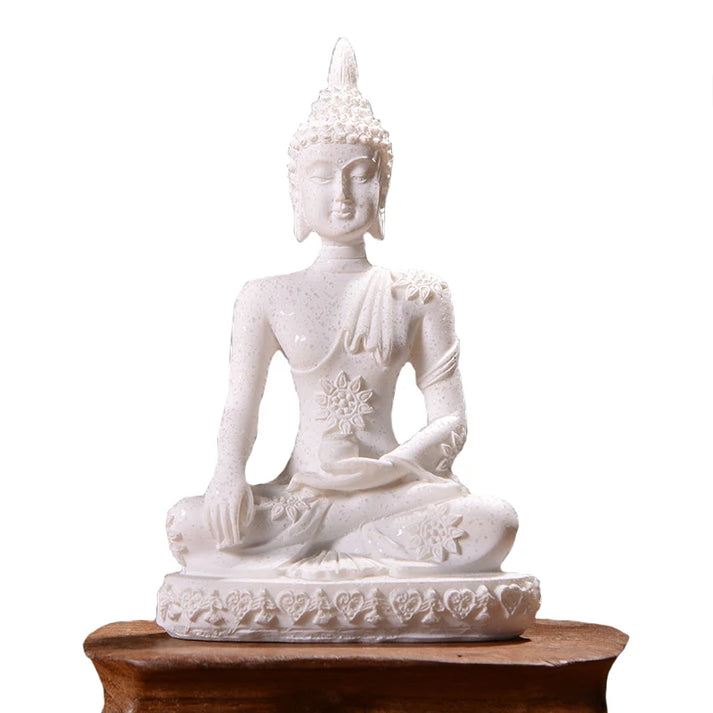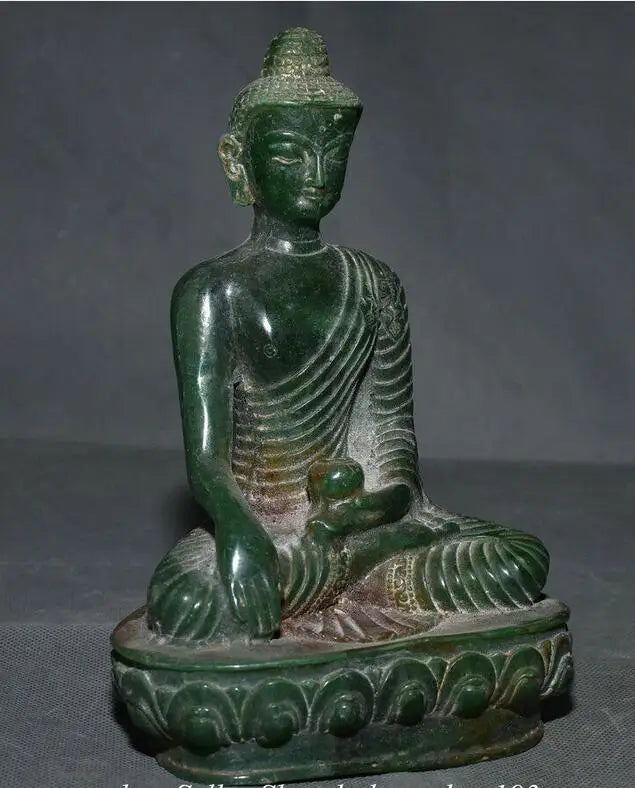Let's talk about Buddha statues and figurines, focusing on the profound significance of their colors.
This article aims to provide an insightful exploration into how different hues play a pivotal role in the representation of Buddha's teachings and the spiritual symbolism they embody.
From serene whites to profound blacks, each color in Buddha statues carries a unique meaning and energy, reflecting various aspects of Buddhist philosophy and practice.
Table of Contents
- The Spectrum of Colors and Their Meanings
- White: Purity and Enlightenment
- Red: The Power of Protection and Life Force
- Blue: Wisdom and Compassion
- Gold: Perfection and Enlightenment
- Green: Harmony and Balance
- Black: Transformation and Deep Insight
- The Role of Color in Buddhist Practice
- How to Choose the Right Color for Your Buddha Statue or Figurine
- The Impact of Color on Meditation and Spiritual Practice
Buddha statues and figurines are not just decorative items; they are revered symbols of Buddhism's rich teachings and philosophies.
These statues serve as visual reminders of the path to enlightenment, embodying the qualities of compassion, mindfulness, and detachment from worldly desires.
The color of a Buddha statue adds a layer of depth to its symbolic significance, representing various spiritual qualities and teachings.
For a comprehensive understanding of these spiritual artifacts, explore what Buddha figurines represent, including the importance of their various colors.
Expanding upon the spectrum of colors and their meanings within the context of Buddha statues and figurines reveals a deeper layer of spiritual symbolism and historical significance.
Each color not only represents specific aspects of Buddhist teachings but also connects to the broader cultural and historical practices in which Buddhism has been practiced.
White: Purity and Enlightenment
White is universally recognized as a symbol of purity, peace, and spiritual awakening across various cultures, and this is profoundly reflected in its use in Buddha statues.
In Buddhism, white often represents the Buddha’s attainment of nirvana, transcending the physical form and the cycle of death and rebirth. It is associated with the Buddha's perfect purity and wisdom, often depicted in statues of the Buddha in meditation or in a state of serene enlightenment.
White can serve as a reminder to followers to strive for mental clarity and to focus on their spiritual journey with a pure heart and mind.

A Miniature Buddha Figurine in natural white sandstone.
Red: The Power of Protection and Life Force
Red is a powerful color in Buddhist tradition, symbolizing the life force, vitality, and the strength to overcome obstacles.
It is often associated with the teachings of courage and protection, suggesting the Buddha's role as a protector against evil and suffering.
Red statues may depict the Buddha in poses that symbolize strength and determination, serving as a motivational force for practitioners to confront and overcome their personal challenges. Additionally, red can signify the warmth of compassion, encouraging a heartful approach to life and practice.

A stunning Red Amber Buddha statue.
Blue: Wisdom and Compassion
Blue, particularly deep blue or lapis lazuli, holds a special place in Buddhism, symbolizing the depth of wisdom and the vastness of the Buddha's teachings.
It reflects the infinite nature of the dharma and the Buddha’s compassionate nature. Blue statues often depict the Buddha in a teaching pose, highlighting the importance of wisdom and understanding in achieving enlightenment.
The color encourages practitioners to develop deep insight into the nature of reality and to cultivate compassion for all beings.
Gold: Perfection and Enlightenment
Gold represents the ultimate achievement of enlightenment and spiritual perfection. It is a color of success, richness in wisdom, and the highest state one can attain in Buddhism.
A Gold-colored Buddha statue is not just decorative; they serve as a visual representation of the radiant qualities of the Buddha’s teachings and the enlightening truth of the dharma.
The luminosity of gold symbolizes the inner light that guides practitioners towards enlightenment and liberation.
Also note that the gold and red colors often found in Laughing Buddha statues are vibrant symbols of happiness, prosperity, and good fortune.
Green: Harmony and Balance
Green is closely associated with nature, growth, and harmony. In the context of Buddha statues, green signifies balance, peace, and the rejuvenating aspects of the teachings.
It is often linked with the Buddha’s connection to the natural world and the idea of renewal and spiritual growth.
Green encourages practitioners to live in harmony with their surroundings, promoting a life of balance, ethical conduct, and compassion towards all forms of life.

A Jade Carved Shakyamuni Amitabha Buddha Sculpture.
Black: Transformation and Deep Insight
Black Buddha statues are rare but deeply meaningful, embodying the transformation of ignorance into wisdom and the profound understanding of the universe's ultimate nature.
Black symbolizes the deep, often challenging journey of self-discovery and the dissolution of ego and illusion.
It represents the fertile ground from which understanding and enlightenment can grow, encouraging practitioners to embrace the unknown and to trust in the process of their spiritual journey.
The spectrum of colors in Buddha statues serves as a rich tapestry of symbolism, each hue offering a unique lens through which to understand and engage with Buddhist teachings.
By contemplating the significance of these colors, practitioners can deepen their connection to the Buddha's path and integrate these qualities into their own journey towards enlightenment.
The Role of Color in Buddhist Practice
In Buddhist practice, the color of a Buddha statue or figurine can significantly impact one's meditation and spiritual journey.
Each color can evoke different feelings and states of mind, aiding practitioners in focusing their intentions and deepening their practice.
How to Choose the Right Color for Your Buddha Statue or Figurine
Choosing the right color for your Buddha statue depends on your personal spiritual goals and the aspects of Buddhist teaching you wish to focus on. Consider what qualities you are seeking to cultivate in your life and select a color that aligns with those aspirations.
A Helpful table
Here’s a helpful table summarizing the colors in Buddha statues and figurines along with their meanings and significance:
| Color | Symbolism & Significance | Buddha Poses/Depictions |
|---|---|---|
| White |
Purity, peace, spiritual awakening (Nirvana); symbolizes perfect purity, mental clarity, enlightenment
|
Meditating Buddha; serene enlightenment poses |
| Red |
Life force, protection, vitality; embodies courage, compassion, strength to overcome obstacles
|
Protective poses; depictions of overcoming challenges |
| Blue |
Wisdom, compassion (infinite teachings of Dharma); represents deep wisdom and universal compassion
|
Teaching poses; gestures of spreading wisdom |
| Gold |
Perfection, spiritual radiance; signifies enlightenment and divine wisdom
|
Radiant poses; depictions of spiritual perfection |
| Green |
Harmony, balance (renewal/nature); symbolizes growth in ethics and peace
|
Peaceful poses; seated in natural surroundings |
| Black |
Transformation, deep insight (dissolution of ego); reflects self-discovery from ignorance to wisdom
|
Profound meditation poses; embracing inner truth |
This table helps to visualize and better understand how each color in Buddha statues plays a significant role in both Buddhist teachings and personal spiritual journeys.
Pro Tip: Learn the respectful ways to greet a Buddha statue, where color can play a role in the statue's symbolism and the energy it brings.
The Impact of Color on Meditation and Spiritual Practice
The color of a Buddha statue can enhance the meditative experience, creating an atmosphere that supports concentration, mindfulness, and spiritual awakening.
Incorporating color significance into your practice can deepen your connection to the teachings of Buddhism.
Pro Tip: Position your Buddha figurine in ideal places as per Feng Shui and Vastu Shastra, using color symbolism to enhance the positive energy in your home.
Summing it up
Understanding the significance of colors in Buddha statues and figurines can enrich your spiritual practice and daily life.
These colors serve as powerful symbols of the qualities and teachings of the Buddha, offering guidance and inspiration on the path to enlightenment.
Considering a spiritual gift? See why gifting a Buddha statue is meaningful, and how the color of the statue can personalize your gesture. Also, consider what makes Buddha Head Statues special.









1 comment
Thank you for this insightful article on the significance of colors in Buddha statues and figurines. The way you’ve explained the meanings behind each color adds so much depth to understanding these sacred symbols. It’s wonderful to learn how these hues embody different aspects of spiritual practice and enlightenment. This information will definitely enhance my appreciation and connection to these statues in my meditation space. Keep sharing such thoughtful content—it’s truly inspiring!
Regards,
Antique Buddhas
https://www.buddha-statues.info